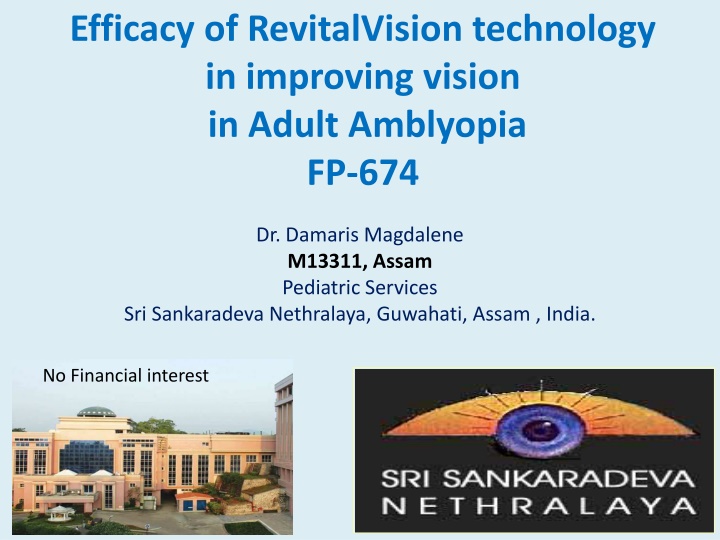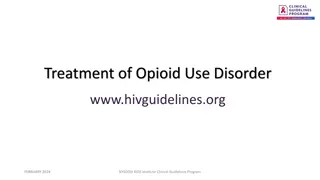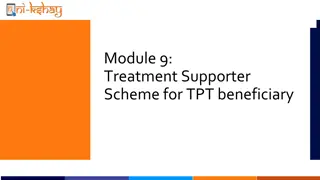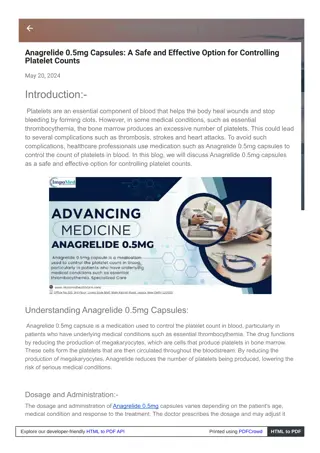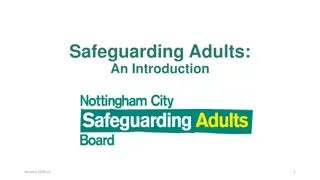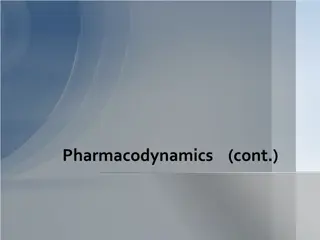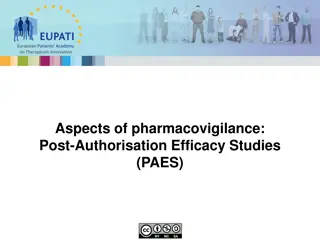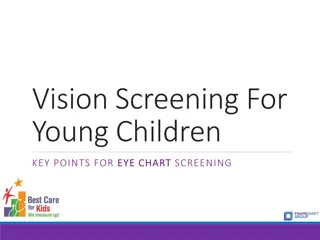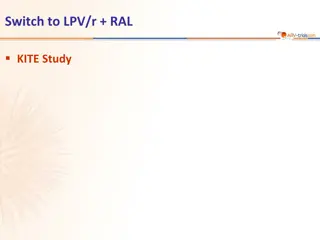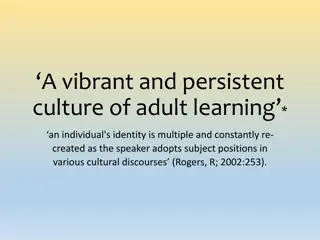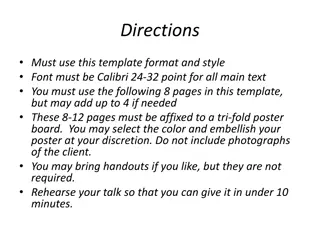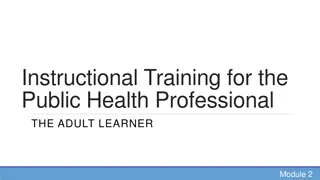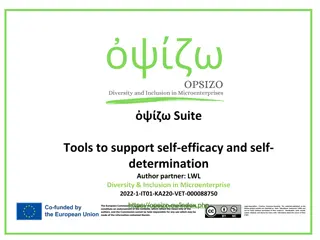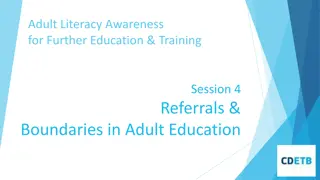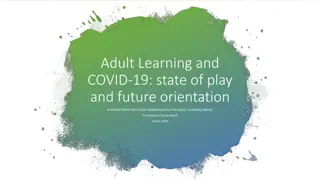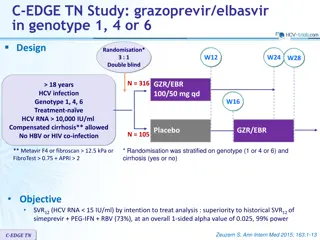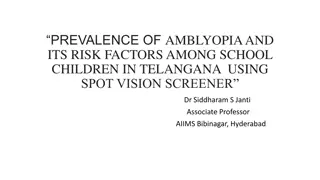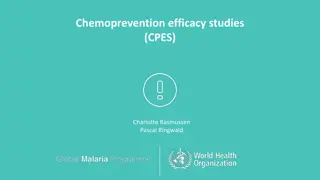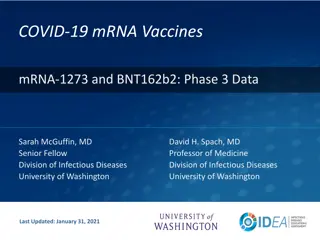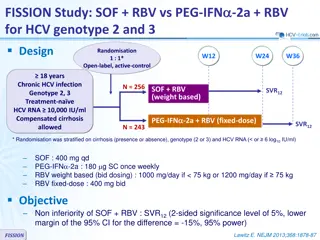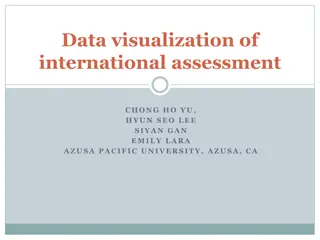Efficacy of RevitalVision Technology for Adult Amblyopia Treatment
Study conducted to evaluate the efficacy and safety of RevitalVision technology in improving visual acuity in patching-resistant amblyopic eyes of patients older than 9. The study adhered to the Declaration of Helsinki, with baseline examinations and a compliance analysis on patient participation. A total of 45 patients completed the therapy with good compliance.
Download Presentation

Please find below an Image/Link to download the presentation.
The content on the website is provided AS IS for your information and personal use only. It may not be sold, licensed, or shared on other websites without obtaining consent from the author.If you encounter any issues during the download, it is possible that the publisher has removed the file from their server.
You are allowed to download the files provided on this website for personal or commercial use, subject to the condition that they are used lawfully. All files are the property of their respective owners.
The content on the website is provided AS IS for your information and personal use only. It may not be sold, licensed, or shared on other websites without obtaining consent from the author.
E N D
Presentation Transcript
Efficacy of RevitalVision technology in improving vision in Adult Amblyopia FP-674 Dr. Damaris Magdalene M13311, Assam Pediatric Services Sri Sankaradeva Nethralaya, Guwahati, Assam , India. No Financial interest
AIM To evaluate the efficacy and safety of RevitalVision in improving visual acuity in patching resistant amblyopic eyes of patients older than 9.
Study Methods The study and protocol conformed to the tenets of the Declaration of Helsinki. Informed consent was obtained from all the patients. All patients underwent at least 6 months of patching therapy with no visual improvement prior to starting the RevitalVision therapy.
Study Criteria Exclusion criteria consisted of any other ocular condition or cause for reduced visual acuity other than anisometropia, ametropia, amblyopia due to strabismus and visual deprivation and nystagmus.
Examinations Baseline examination included subjective and objective refractions, cycloplegic subjective and objective refractions, uncorrected and best- corrected distance visual acuities (BCVA) were tested using an ETDRS LogMAR visual acuity chart. The baseline contrast sensitivity was also documented. The patients then underwent slit- lamp biomicroscopy and fundus evaluation by binocular indirect ophthalmoscopy. All the cases in the study then underwent an orientation guided by the trainer.
Compliance analysis 54 patients age 9 60 started the therapy program 9 patients who started the program failed to comply (16.7%) 45 patients completed the therapy with good compliance (83.3%) Compliance criteria: We included patients who complied with minimum training instructions: At least 25 training sessions out of 40 required At least 10 sessions per month out of 12 -15 required
Example of Complying Patient Completed 40 sessions in sequence, every 2 days
Non Complying Patient Stopped after 6 sessions
Study population This prospective study comprised of 45 patients between 8 and 60 years of age, of which 39 had amblyopia due to refractive error ,3 due to visual deprivation , two cases had nystagmus and one case had strabismus. All had undergone patching therapy prior to RevitalVision therapy. The main outcome measures were distance best corrected visual acuity (BCVA).
Distribution of cases on the basis of etiology Causes Frequency Percentage Hyperopia 13 28.89% Mixed Astigmatism 10 22.22% Ametropia (Hyperopia) 6 13.33% Compound Myopic Astigmatism Myopia 5 Refractive 11.11% 3 6.67% Ametropia (Myopia) Compound Hyperopic Astigmatism 1 2.22% 1 2.22% Nystagmus 2 4.44% Strabismus Visual deprivation 1 2.22% 3 6.67% 100.0 Total 45
FEMALES 49% (22) MALES 51% (23)
VA Improvement Age VA Lines improvement 1.4 # Patients 8 to 12 16 13 to 18 2.0 17 20 to 29 2.7 8 30 to 60 2.9 4 Average 2.0 45
Improvement vs age group VA Improvement vs age group VA Lines 3.5 # 4 # 8 3.0 2.5 # 17 2.0 # 16 1.5 1.0 0.5 0.0 8 to 12 13 to 18 20 to 29 30 to 60 Age
Conclusion Our study is the first prospective study in India to report the efficacy and safety of this novel non-invasive perceptual learning computerized program called RevitalVision. Our study confirms current published data of enhanced BCVA of 2 + lines in adult amblyopic individuals not responding to the traditional patching therapy.
Limitations Limitations of this study include the absence of a comparative control group and a small sample size Preliminary evidence suggests RevitalVision PL treatment is safe and improves BCVA in adult amblyopic patients who do not respond to the traditional patching therapy. Thank you!
